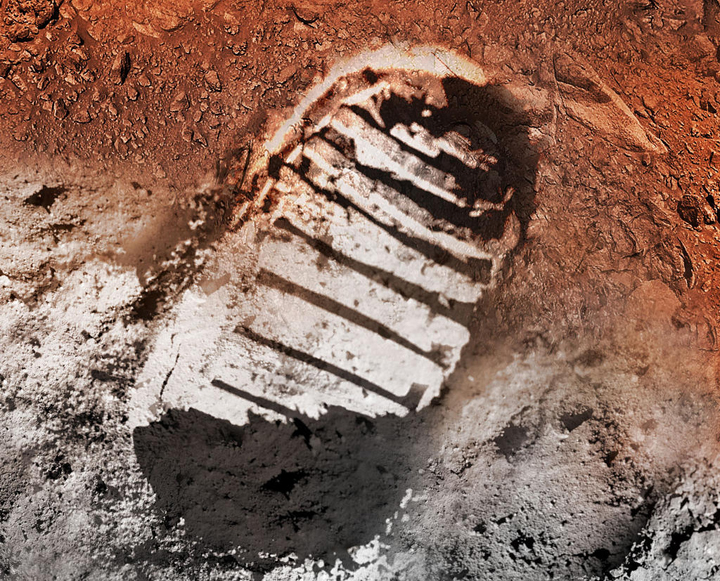TORONTO – From the first human in space to the launch of the space shuttle, it was a mere 20 years — to the day. From the first human in space to getting to Mars? It will be almost 100 years.

What happened to our grand vision of reaching out into space?
READ MORE: We’re planning to go to Mars: Here’s how it all started
Science fiction of the 1940s and ’50s fired the imagination. We dreamed of colonies on the moon, people living in space stations, vacations to Mars, even alien life.
But some time during 1970s, the quest to send humans to the far reaches of space dwindled.
“Once we saw that Russia was not ready to land on the moon, we stopped going to the moon,” astrophysicist Neil deGrasse Tyson said in a 2011 interview with Bill Maher. Tyson is the director of the Hayden Planetarium in New York City and the author of Space Chronicles, a book that examines the history and future of the American space program.
“After we stopped going to the moon, it all ended. We stopped dreaming.”
The Space Race and Cold War
The 1950s and ’60s were largely marked by “red” fear — the fear of communism and more specifically, the Soviet Union. As bitter enemies, the United States and the Soviet Union battled for supremacy in all things. And that included space.
So the launch of Earth’s first artificial satellite by the Soviet Union in 1957 was met with great fear. Vice president Lyndon B. Johnson is reported to have said that he didn’t want to live beneath “the light of a communist moon.”
Thus began the space race.
READ MORE: We’re planning on going to Mars: Here’s how it all started
Cheaper options
From 1957 to the middle of the 1960s, the U.S. and Soviets volleyed back and forth with scientific achievements: the first human in low-Earth orbit; the first human in orbit; satellites; two-person crews in space. It was a fast and furious time of space exploration.
Then, on July 20, 1969, Americans Neil Armstrong and Buzz Aldrin became the first humans to walk on the surface of another solar system body, our moon. The Soviet Union may have started out of the gate first, but the United States had reached the finish line first. The race was over.
WATCH: Astrophysicist Neil deGrasse Tyson’s impassioned speech about why humans stopped exploring deep space
During the early 1970s the United States was still very much involved in the Vietnam War. And sending humans out into deep space cost a lot of money. So in 1970, the United States tabled the final mission to the moon. On Dec. 14, 1972, Eugene Cernan became the last man to walk on the lunar surface.
But the U.S. didn’t want to abandon space completely, a place that it had so clearly reigned over. The challenge was to do it more cost-effectively.
The solution was a space platform, the Skylab space station, which orbited from 1973 to 1979. It was a lot cheaper than the $25 billion cost of the Apollo program (more than $150 billion in 2014 dollars).
Then came the space shuttle. Though criticized for being expensive, over 30 years the shuttle program is estimated to have cost roughly $200 billion. The shuttle had 35 missions. Apollo had 7.
Of course, the United States wasn’t the only country capable of launching missions into space. There was still the Soviet Union, but the country had other things to worry about — internal strife leading to its dissolution. Still, it did build the Mir space station which orbited from 1986 to 2001. It even built its own shuttle program called Buran, but that was abandoned in 1993 after just one unmanned orbital mission.
READ MORE: In Photos-NASA’s first launch of Orion spacecraft and what to expect
After the break-up of the Soviet Union, Russia remained at the forefront, launching extremely important and valuable missions to space, including missions to Venus, the moon and Mars. But there was no focus on getting humans out into deep space.
Of course, there were other countries with space programs, but none with the experience or the financial backing of the two superpowers that had decided to focus inward rather than outward. If they couldn’t afford it, no one could.
A rebirth
Tyson and others have publicly criticized the American government for its lack of NASA funding.
“The NASA budget is 4/10ths of one penny on a tax dollar,” Tyson told a science panel in 2013. His assertion that a penny from each tax dollar in the United States would fund all of NASA’s missions and programs has lead to the Penny4NASA campaign which seeks to raise the American funding to one per cent of the federal budget.
But this is the dawn of a new age. There are new players on the stage, including China and India. China has sent astronauts into space, while India sent a probe to Mars for $74 million USD — about 1/10th the cost of the recent NASA Mars satellite MAVEN. They are proving that it can be done, and not just by the Americans or Russians.
Private enterprise now provides financial means — the backbone — of space exploration. Increased innovation, research and technology can make it all possible once again.
And rather than a race between superpowers, the future of space exploration will be an international effort.
The dawn of the new age is upon us and Mars is once again in our sights.
Follow us here at Global News for live, on-the-scene coverage of the Orion launch on Dec. 4.





Comments